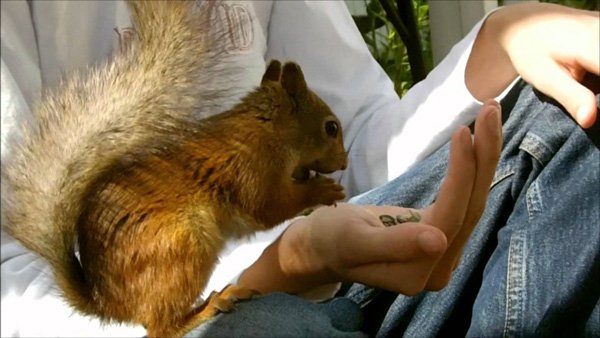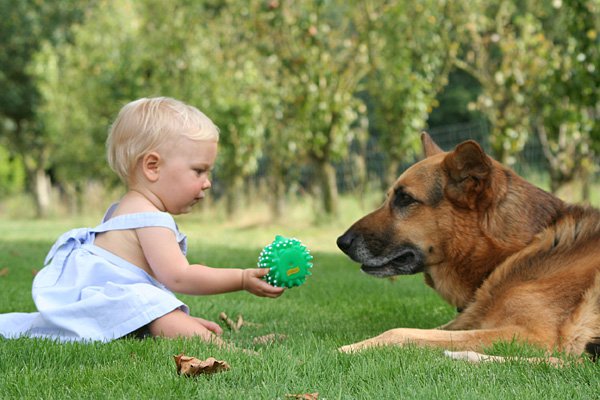
Dogs, like humans, can have a genetic predisposition towards certain diseases. Genes passed on from generation to generation may depending on certain factors, express themselves. These diseases can be wide and varied, but one in particular is of great concern to pet owners.
Hip dysplasia is a genetic condition that affects some dogs worse than others. Before we can discuss the nature of the disease, it would be useful to take a look at the joint in question. The hip joint is what is called a ball and socket joint. The name is fairly self explanatory: the first bone of the leg has a ball shape on the top, which fits into a socket, or cup shaped bone mass, attached to the pelvis. When the legs are moving, the little ball rotates around the socket and offers a wide range of movement in most directions.
When a dog develops hip dysplasia, the joint is poorly formed. The "socket" portion of the joint, instead of being the rounded cup that it should be, has a flattened side, such that the "ball" end cannot sit properly in the joint. The result is that such a dog has a weakened joint and its legs may splay out as the ball of the joint searches for somewhere it can rotate.
Many pet owners wonder just how this slight deformity is such a big deal. How might it actually affect a dog? The condition itself develops in puppyhood and a puppy may experience slight discomfort and pain. This is fairly rare however, and cases of hip dysplasia are generally diagnosed years later, unless a radiograph is taken.
As a dog walks on the legs, and the leg puts pressure on the malformed joint, the dog's body will try to compensate by slowly building up bone tissue in the joint. After years of using this joint, a dog will develop painful arthritis and will likely have difficulty walking.
If you suspect your dog may have hip dysplasia, your veterinarian can perform a few quick tests. Your dog may be asked to walk around briefly to see if his gait swivels slightly. The veterinarian may also extend your dog's leg backwards, looking for signs that this may be painful. Another test involves having your dog lay on his back. The veterinarian will gently pull your dog's paw away from the body and, with a hand on the hip, will feel and listen for a "pop" as the ball of the joint slips back in to the socket.
If dysplasia is suspected, the veterinarian will order radiographs to be taken, and this will show conclusively whether or not the joint is malformed. Your veterinarian will discuss with you several options for treatment. There are several surgeries available and their efficacy depends on the size and weight of your dog. These surgeries range from removing the ball of the joint completely and letting the body form a "false joint" to total hip replacement. Non surgical treatment basically looks to mitigate the arthritis your dog is experiencing. Non steroidal anti inflammatory drugs may be prescribed, and certain nutritional regimens or supplements may be given.
Do you know that a body harnesses actually encourage your dog to pull? That is because the pressure points on a harness cause your dog to response by pulling forward. To learn more about canine dog health and canine dog care, visit CanineTouch.com now.
 Pyoderma In Dogs
Pyoderma In Dogs
 Boring Ordinary Dog Tags – Are There Better-looking Personalized Dog Tags Out There?
Boring Ordinary Dog Tags – Are There Better-looking Personalized Dog Tags Out There?
 Make Your Chickens Healthy – Provide them with Coops and Runs
Make Your Chickens Healthy – Provide them with Coops and Runs
 Information About Rodents For Potential Rodent Owners
Information About Rodents For Potential Rodent Owners
 Free Labrador Guide For Better Understanding Of Their Needs
Free Labrador Guide For Better Understanding Of Their Needs
 Feline Influenza - All About Cat Flu
Feline Influenza - All About Cat Flu
Copyright © 2005-2016 Pet Information All Rights Reserved
Contact us: www162date@outlook.com